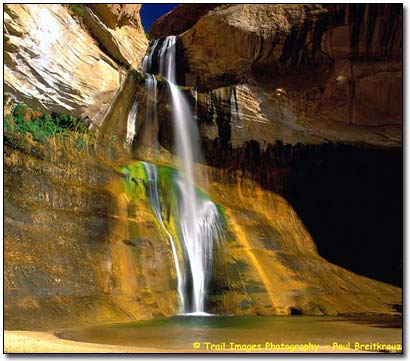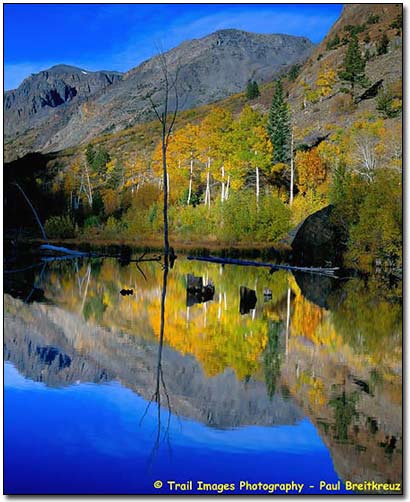|
The Medium Format & Large Format photographic equipment can be somewhat of an extreme transition for all of us who started out with the very basic point and
shoots, or the advanced amateurs who picked up 35mm as their standard platform initially. Just the terms alone can lose some of the best in each category
discussing the various techniques associated with one platform or format to the other, never mind the costs associated with film and hardware differences. I have
used and still use all three formats. These days for me it is primarily the Medium Format with additional overlap to the Large Format.
The key to the transition or the reasons for even having various formats are as varied as the reasons and transitions associated with film to digital as a media.
 People have a multitude of approaches to photography as anyone might in any other field of Art, Sports, Careers, or Leisure. This statement alone can surely conjure
up a multitude of tools, equipment, products, or training required to be effective in any of the aforementioned subjects.
People have a multitude of approaches to photography as anyone might in any other field of Art, Sports, Careers, or Leisure. This statement alone can surely conjure
up a multitude of tools, equipment, products, or training required to be effective in any of the aforementioned subjects.
As you can imagine this brings us only to the beginning of the subject on why all the different sizes of cameras, lenses, tripods, filters, specialized cases, and
backpacks. Once again, people have different needs, desires, and outlooks on most subjects in life. Photography is no different than all things we as humans show
interest in. Hence the real reason for all the proliferation of platform sizes, equipment lists, and approaches to photography can be just the overall end results
that can be obtained with each unit. Very simply, all would understand that we do not find people in the field with an 8x10 Large Format camera looking for geese coming and going from a lake in a near by
duck blind, but you surely would find the need for a good 35mm AF with a Super Long f2.8 lens. This is an obvious choice that all camera users would understand with a
little background on the various approaches to the subject matters being photographed.
This leads to some very interesting and overall needs for the Medium Format and how it can help with a variety of subject matter & with some of the simplicity of using
the 35mm platform. For those who are interested, bigger is better with light table results if you are inclined to want the finished product blown up larger then the
typical 8x10 photos. Before you immediately turn the page, this does not mean that 35mm format cannot obtain significant results when blown up, but there are
limitations. No different than the limitations that can come about between Medium Format and that of Large Format under the same stretch for larger prints.
Medium Format has been around for an extremely long time with the standard size ranging from around 6.45cm up to around 6x9cm. There are a variety of manufactures
 including some very well know vendors such as Hasselblad, Mamiya, Bronica, Pentax, Rollei, and Fuji just to name a few. Along with the various vendors come the
specialties with respect to some of the negative/transparency sizes. Typically stated as Square, Rectangle, or Panoramic. Some of the units are quite versatile
with the ability to capture several sizes with film back changes, including Polaroid for quick field or studio results. Yes and even including digital formats. There are
non-OEM groups that have catered to some of the users of the Medium Format units by offering digital backs that latch right on to the back exactly the same way the
present film holders do, making these cameras even more up to date if necessary.
including some very well know vendors such as Hasselblad, Mamiya, Bronica, Pentax, Rollei, and Fuji just to name a few. Along with the various vendors come the
specialties with respect to some of the negative/transparency sizes. Typically stated as Square, Rectangle, or Panoramic. Some of the units are quite versatile
with the ability to capture several sizes with film back changes, including Polaroid for quick field or studio results. Yes and even including digital formats. There are
non-OEM groups that have catered to some of the users of the Medium Format units by offering digital backs that latch right on to the back exactly the same way the
present film holders do, making these cameras even more up to date if necessary.
I have been using the Mamiya standard RB-67 platform for many years now with what I consider to be excellent results from the size of the 6x7cm transparencies obtained.
The camera was first produced as the standard RB-67 from 1970 to 1974. At that time the camera was updated to the Pro-S from 1974 until 1990. At this point in time
Mamiya began to produce two products identical in film size and usage, one of the units is the all mechanical hang on from 1970 as the RB-67SD, and the newer all
electronic version as the RZ-67.
Although most may opt for the high end electronic type units if they are use to using all the horns whistle bells of a late model 35mm unit, I personally find the
hard-core reliability of the mechanical units to be the answer for me. One thing about the larger the format, also comes the bulk in size and will not be for all
 photographers who want nice lightweight hardware being vended these days for the field. This can be a real detriment in deciding what to drag along on any trip. I
would say anything over 4 miles in hiking distance might lend more to the super lightweight carbon fiber/aluminum everything available these days, including the
camera bodies. The basic RB-67 could probably be dropped off the edge of the Grand Canyon leaving a significant crater at the bottom, but still be used immediately
upon being dug up. These mechanical ones are bullet proof, & ideal for long-term usage. Like most things of precision they require to be treated with some TLC and
complete cleanliness to retain performance. But I will say, I have also shot in semi windy conditions when I saw lightweight 35mm gear and sail type Large Format stuff
being disassembled for retreat by other photographers because of the wind disturbances. The weight and dynamics of the RB-67 held fast under the same
conditions while the others could not hold true enough to keep blur out for any lengthy shutter speeds.
photographers who want nice lightweight hardware being vended these days for the field. This can be a real detriment in deciding what to drag along on any trip. I
would say anything over 4 miles in hiking distance might lend more to the super lightweight carbon fiber/aluminum everything available these days, including the
camera bodies. The basic RB-67 could probably be dropped off the edge of the Grand Canyon leaving a significant crater at the bottom, but still be used immediately
upon being dug up. These mechanical ones are bullet proof, & ideal for long-term usage. Like most things of precision they require to be treated with some TLC and
complete cleanliness to retain performance. But I will say, I have also shot in semi windy conditions when I saw lightweight 35mm gear and sail type Large Format stuff
being disassembled for retreat by other photographers because of the wind disturbances. The weight and dynamics of the RB-67 held fast under the same
conditions while the others could not hold true enough to keep blur out for any lengthy shutter speeds.
I have included some items of interest in this article along with a few plus and minuses of fact and illusions about Medium Format, but I hope it may bring about a
little understanding of the reasons for making various platforms and styles. Basically stated, not one style type or size fits each of our photographic needs and
preferences.
Here is a list of a few key points for Medium Format & Mamiya RB in general:
1) Film size range typically from 6.45cm to 6x9cm image.
2) 120-220 films come in all popular brands and ASA types.
3) Single lens reflex capability on most units with a variety of prism & chimney viewing devices.
4) Variety of lenses is usually not as vast as 35mm platforms, but meets most needs especially landscape usage including a few shift tilt lenses too.
5) 3 key features of Mamiya RB67. Lens threaded ends are all the same 77mm requiring one filter sizing throughout. Also, revolving film back converts vertical
to horizontal exposures without rotating the camera on the tripod. Additionally, the film magazines can be exchanged during any position on a roll of film with another
unit and reinstalled later for varying film usage.
6) Variable Magnifier Diopter can be fitted to any of the RB prisms allowing the ability to help magnify image on viewing screen. Flips out of the way to see
complete view of screen.
| 
